
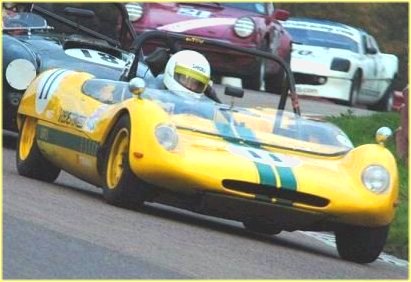 I had no intention of buying a Lotus 23 replica! The 'hobby car' bay in my garage here in Oregon was occupied by a Westfield Lotus Eleven replica that I had purchased and built nearly 12 years ago. I was browsing the 'net for a picture of a Bobsy SR3 sports racer and happened across an advert for a Noble Auriga Lotus 23 racer in England. The photo at the right was part of the advert.
I had no intention of buying a Lotus 23 replica! The 'hobby car' bay in my garage here in Oregon was occupied by a Westfield Lotus Eleven replica that I had purchased and built nearly 12 years ago. I was browsing the 'net for a picture of a Bobsy SR3 sports racer and happened across an advert for a Noble Auriga Lotus 23 racer in England. The photo at the right was part of the advert.
Now, the Westfield is a very entertaining car -- but after so many years sliding around corners on skinny tires and wire wheels, the idea of car with real grip, actual brakes, and a 'modern' DOHC engine really appealed to me. Six months later I had the Auriga in my garage and the Westfield sold to a buyer in SoCal. The differences between the two cars are huge! But before I get into that, a little history on Lee Noble...
| ||||||||||||||||
| ||||||||||||||||
|
Back to my car: the engine is the Alfa Romeo all-alloy 2-litre DOHC 'twin spark' from the Alfa 75 'Milano' -- this is not the same engine found in the Alfa 164 or Spyder. The variable valve timing has been locked out, and Kent 'Sports R' cams installed. Induction is thru twin Weber DCOE 45 carbs via an aluminum billet manifold. Exhaust is a custom stainless steel tri-Y header to a transverse straight-thru muffler. Power output is 187 BHP at the wheels with a 2500 to 6500 RPM power band. The transaxle is a 5-speed unit from the Alfasud coupe, with a Ford-splined input shaft and modified selector. Final drive ratio in 5th gear is 3.75:1. Clutch is Escort Mk. 1 with a modified Alfa pressure plate. The Alfasud transaxle incorporates inboard 230 mm cross-drilled disc brakes. Front brakes are 244 mm cross-drilled Cortina. Steering rack is quick-ratio Cortina. Front and rear suspension are adjustable dual A-arms with coil-over Spax adjustable shocks. Tires are Yokohama Advan A032R: 185/60X13 on 6" wide rims front, 205/60X13 on 7" wide rims rear. Weight distribution with driver is 38% front, 62% rear. The car is street registered and used for general recreation and track days. What is it like to drive on the street? Imagine driving the 'Autopia' ride at Disneyland as an adult -- knees drawn up, tiny steering wheel in your lap, wind right in your face, way-too-quick steering, and a lot of grip. Now, instead of 3 horsepower, imagine 187!
| ||||||||||||||||
|
| ||||||||||||||||
|
June, 2013 -- Received the following email from John Bridge at Mamba Motorsports, former makers of the Mamba C23 -- direct decendent of the Noble 23:
My own car is also for sale – I love it, but have gone racing Austin Healeys & Midgets with my son in my semi-retirement, so need to fund the habit!!
Incidentally, unless I am mistaken, your opening pic of a yellow 23 is Alex Taylor who did very well in the SRGT series with his car. His father Trevor was so impressed he bought another from us ....!
Also, Ken Culverwell campaigns one of our C23s still in the SRGT series and won his championship last year I believe.
All information to support the development of what Mr Noble started!!
Regards,
John Bridge | ||||||||||||||||
|
| ||||||||||||||||
|
April, 2010 -- I posted a short message on a forum for Noble car owners and gave a link to this website. I was surprized and very pleased to get the following response:
| ||||||||||||||||
|
I've also repositioned the oil cooler behind the duct on the left side of the car, just behind the 'door'. No more hot air blast to the cockpit! | ||||||||||||||||
|
| ||||||||||||||||
|
September 2007 -- I've spent most of the season working on engine tractability. The Alfa 2-litre had been fully 'tweeked' for all top-end power with no interest in low and mid-range torque. The engine would barely run below 3000 RPM and then would come 'on cam' abruptly and leap forward. The exhaust note sounded like a goat being fed into a stump grinder. Here's what I found:
| ||||||||||||||||
|
September 2006 -- I'm back from track day at Portland International Raceway (PIR) and I have a better idea of how the car works. Most things it does very well. Power out of the turns was awesome with no complaints or wheel spin. Braking was very good, fade-free, and more stable than I expected from a car with considerable rear weight bias. Turn-in was crisp and steering response in the corner was quick and light. In a stable turn, the car showed mild understeer. Trailing brake into a corner will be avoided in the future (spun). I was also caught out a couple of times trying to throttle-steer - the car alternately broke loose front and rear and sort of 'waffled' sideways, scrubbing off speed. Disconcerting, but not evil. I tidied up my style a bit, did all my braking before turn-in, and held power neutral down to the apex. My main problem was lateral grip. I was losing a lot of ground in the sweeping turns at PIR dancing on the edge of adhesion. I put it on a chassis alignment rig after I got back home and found way too much rear toe-in. With that corrected, I expect a more forgiving and adaptive feel in the corners and greater 'stick'. Road manners of the car are good. It will idle in stop-and-go traffic on a hot day without overheating and the clutch is well suited to street starts without grabbing. I do need to reposition the oil cooler -- it currently sits in a rough opening between the engine bay and the cockpit. Air pressure is less in the cockpit than in the engine bay, so hot exhaust from the cooler makes life difficult for the driver on a hot day. I'll remount the cooler and fabricate a fiberglass duct from the NACA scoop on the left door. The very low windscreen has a lip that directs the airflow up my nose! I've added a small diverter that proves only a couple of inches additional height is needed. A permanent solution is in the works. | ||||||||||||||||
|

|
||||||||||||||||
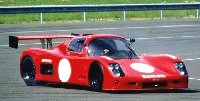 1983: his first offering was the 'Ultima' - a mid-engined steel spaceframe GT car powered by Renault V6 or Chevrolet V8 that gained a large following. About 200 cars were made before he sold the design to Ted Marlow, who still produces the Ultima.
1983: his first offering was the 'Ultima' - a mid-engined steel spaceframe GT car powered by Renault V6 or Chevrolet V8 that gained a large following. About 200 cars were made before he sold the design to Ted Marlow, who still produces the Ultima.
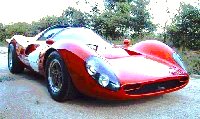 1986: the next Lee Noble design was a replica of the Ferrari P4 powered by a Renault V6 or Chevrolet V8. Something like 250 of these replicas were built, and an enthusiastic owners group meets regularly to show and race their cars. The cars remained in production for at least 20 years at NF Auto Developments.
1986: the next Lee Noble design was a replica of the Ferrari P4 powered by a Renault V6 or Chevrolet V8. Something like 250 of these replicas were built, and an enthusiastic owners group meets regularly to show and race their cars. The cars remained in production for at least 20 years at NF Auto Developments.
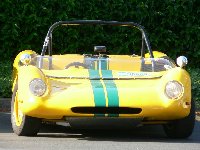 1987: based on the design of Lee's personal race car, the Noble Lotus 23 replica was available with the Lotus 1600cc twin-cam engine or Renault V6. After producing about 60 cars, production was turned over to Auriga Design who offered the car with the Alfa Romeo 2-litre twin-cam alloy engine. Auriga eventually turned over the design to Mamba Motorsport who continued development of the car and offered it with a variety of powerplants. Their C23 car is no longer in production, but full parts support continues and they do track partially-built cars for sale.
1987: based on the design of Lee's personal race car, the Noble Lotus 23 replica was available with the Lotus 1600cc twin-cam engine or Renault V6. After producing about 60 cars, production was turned over to Auriga Design who offered the car with the Alfa Romeo 2-litre twin-cam alloy engine. Auriga eventually turned over the design to Mamba Motorsport who continued development of the car and offered it with a variety of powerplants. Their C23 car is no longer in production, but full parts support continues and they do track partially-built cars for sale.
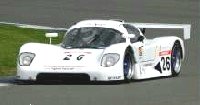 1989: returning to his racing roots, the ProSport 3000 was the next design. Based on the Ultima chassis and bodywork, the ProSport was a budget priced circuit racer powered by the Ford Granada Cosworth V6. About 50 of the cars were built and successfully raced.
1989: returning to his racing roots, the ProSport 3000 was the next design. Based on the Ultima chassis and bodywork, the ProSport was a budget priced circuit racer powered by the Ford Granada Cosworth V6. About 50 of the cars were built and successfully raced.
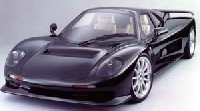 1996: with a great design record behind him, Lee Noble set off into unexplored territory and built the Ascari Ecosse -- a 500 bhp, 200 mph production supercar! The car had astounding performance and came with a typical supercar price - well into six figures. Noble sold out to partner Klas Zwartz and moved on to attampt to build a car with supercar performance at much lower cost. Ascari still builds automobiles, but the Ecosse has been retired from production.
1996: with a great design record behind him, Lee Noble set off into unexplored territory and built the Ascari Ecosse -- a 500 bhp, 200 mph production supercar! The car had astounding performance and came with a typical supercar price - well into six figures. Noble sold out to partner Klas Zwartz and moved on to attampt to build a car with supercar performance at much lower cost. Ascari still builds automobiles, but the Ecosse has been retired from production.
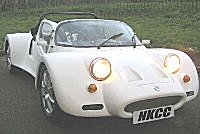 1996: back to affordable cars, Lee Noble designed a vehicle aimed as an update of the classic Lotus Seven. The MidTec Spyder mounted a Renault or Ford Pinto engine midships under a one-piece fiberglass roadster body. Odd looking but with superb handling, about sixty examples sold.
1996: back to affordable cars, Lee Noble designed a vehicle aimed as an update of the classic Lotus Seven. The MidTec Spyder mounted a Renault or Ford Pinto engine midships under a one-piece fiberglass roadster body. Odd looking but with superb handling, about sixty examples sold.

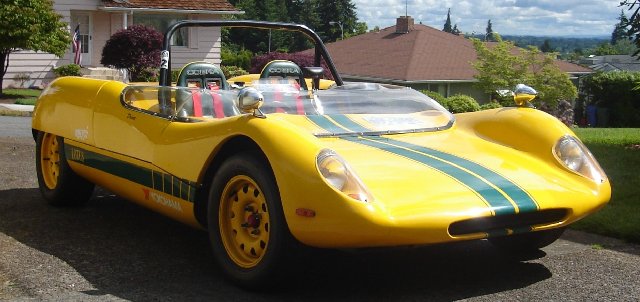


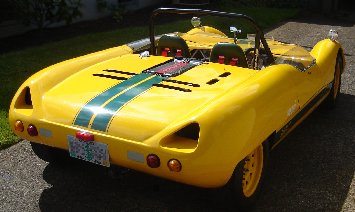
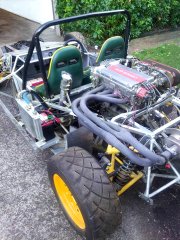
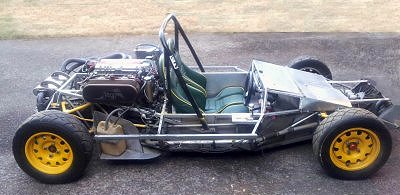
 We no longer make these cars but the jigs and molds are now available for sale if any of your readers are interested.
We no longer make these cars but the jigs and molds are now available for sale if any of your readers are interested.
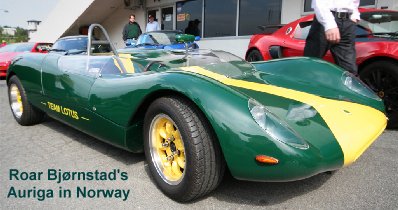

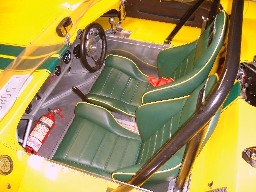 March, 2009 -- I found a pair of seats from Cobra in England that work well for the car. The 17" wide seats are designed for Lotus Seven clones, but fit perfectly in the 23. I no longer have to take my wallet out of my back pocket to fit down into the car and I can carry a passenger!
March, 2009 -- I found a pair of seats from Cobra in England that work well for the car. The 17" wide seats are designed for Lotus Seven clones, but fit perfectly in the 23. I no longer have to take my wallet out of my back pocket to fit down into the car and I can carry a passenger!
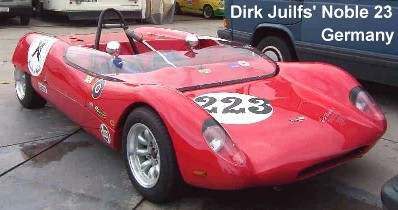 February, 2008 -- I've located another Noble 23! Dirk Juilifs wrote to me from Germany with details of his beautiful red car. His kent powered 23 is both raced and road driven.
February, 2008 -- I've located another Noble 23! Dirk Juilifs wrote to me from Germany with details of his beautiful red car. His kent powered 23 is both raced and road driven.